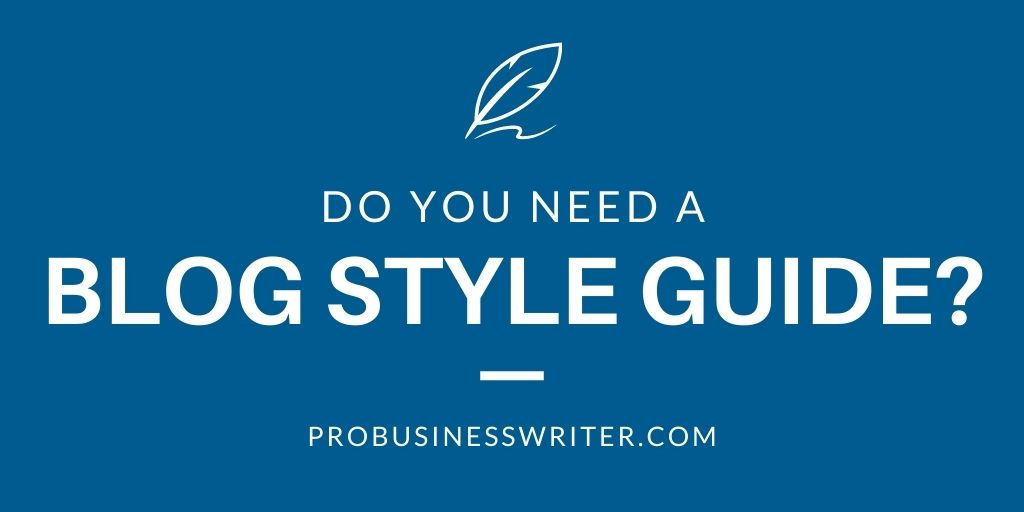
When it comes to business blogs, consistency across your content is important. But what happens if more than one person manages your blog content, and the style and quality aren’t always the same? That’s where a blog style guide can come in handy.
Let’s take a look at what a style guide is, what it should include, and when it might make sense to create a style guide for your company’s blog.
What is a Blog Style Guide?
A blog style guide is a collection of rules that help you maintain consistency in your blog content.
For example, it might include guidelines on how to use sub-headings, your ideal maximum paragraph length, blog post length rules for that site, or what constitutes a credible source when you link to other sites.
A blog style guide might also tell you how long pull quotes should be, how many images you should add to your content, or how many internal links each post should have.
This can also include brand style guidelines such as how to format the company’s name in posts or what colors and fonts you can use if you create custom blog post graphics.
You could choose to follow more standardized guidelines, like AP style which is commonly used in news writing and PR writing. But it’s your blog, so you can choose to set any style guidelines you want.
What Should a Blog’s Style Guide Include?
Having your own simplified style guide can be a good idea for blogs featuring multiple authors.
This maintains consistency while still allowing for creativity and flexibility among your contributors. It also means your bloggers won’t have to learn a comprehensive and rigid style just to write for you if that’s not necessary for some reason (such as running a journalistic or academic blog).
If you do decide to create your own blog style guide, what should it include? Here are some ideas to get you started:
- Guidelines on the overall tone you want the blog to adhere to
- Specific language you want to avoid (swearing, accusatory language without evidence, sensational claims, etc.)
- Content length guidelines (a range often works best)
- Formatting requirements (minimum number–and depth–of sub-headings, how lists should be handled, etc.)
- Image guidelines (image size, file size, orientation, alt text requirements, etc.)
- Citation guidelines (what is, and isn’t considered a trustworthy source to be cited on your blog)
- Link guidelines (such as no self-promotional links, internal link requirements, etc.)
You can make your blog style guide as simple or as detailed as you want. Just understand that the more rules you have, more difficult it can be to police, especially if you don’t have a dedicated blog editor.
When to Implement a Style Guide for Your Blog
How do you know if you even need a style guide for your blog?
If you’re the sole blogger and editor, a style guideline might be a solution in search of a problem. But here are some situations were developing a new blog style guide can make sense:
- You find your own personal style fluctuates, and you want simple reminders to improve consistency.
- You brought on a team of writers for your blog, and you want to ensure a more cohesive style to your content.
- Your blog is going to start accepting posts from guest authors, and you need clear rules those submissions should follow.
- You’ve recently updated your blog or company branding (or are about to), and you need your blog posts to abide by new formatting guidelines tying into those changes.
A blog style guide might not always be necessary. But embracing some level of guidelines early on can help you build a more recognizable blogging brand with readers. And, bonus, if you bring on new contributors down the road, you’ll already have a clear style in play to help them better blend in with your company’s voice and mission.
Not sure where to start in putting together your own blog style guide? Get in touch today to find out how I can help you create a style guide that suits your business.
